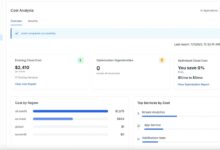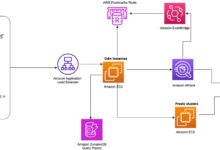AWS Cost Calculator: 7 Powerful Tips to Master Your Cloud Budget
Managing cloud costs can feel like navigating a maze—especially when you’re dealing with a vast ecosystem like AWS. That’s where the AWS Cost Calculator comes in, a powerful tool designed to bring clarity, predictability, and control to your cloud spending. Whether you’re a startup founder, a DevOps engineer, or a CFO, understanding how to use this tool effectively is no longer optional—it’s essential.
What Is the AWS Cost Calculator and Why It Matters

The AWS Cost Calculator, officially known as the AWS Pricing Calculator, is a free online tool provided by Amazon Web Services that allows users to estimate the monthly cost of running various AWS services. It’s an indispensable resource for anyone planning to migrate to the cloud, scale existing infrastructure, or simply gain better visibility into their cloud expenditures.
Core Functionality of the AWS Cost Calculator
The calculator enables users to build a virtual representation of their AWS architecture by selecting specific services—such as EC2 instances, S3 storage, Lambda functions, RDS databases, and more—and configuring them with real-world usage parameters. These include instance types, data transfer volumes, storage tiers, and geographic regions.
- Users can simulate multi-service environments with granular input fields.
- It supports both on-demand and reserved instance pricing models.
- Estimates are generated in real time as configurations change.
This dynamic modeling helps organizations forecast costs before committing to actual deployments, reducing financial risk and improving budget accuracy.
Who Should Use the AWS Cost Calculator?
The tool serves a wide range of stakeholders across different roles and industries. IT managers use it to plan infrastructure upgrades, developers rely on it to optimize application architectures, and finance teams leverage it for budget forecasting and cost justification.
- Startups: Need precise cost estimates to stay within tight funding limits.
- Enterprises: Use it for large-scale migration planning and TCO (Total Cost of Ownership) analysis.
- Consultants: Employ it to provide clients with transparent, data-driven proposals.
“The AWS Cost Calculator is not just a number generator—it’s a strategic planning instrument that bridges technical design and financial accountability.” — Cloud Architecture Expert, AWS Partner Network
How to Use the AWS Cost Calculator Step by Step
Navigating the AWS Cost Calculator doesn’t require advanced technical skills, but doing it right demands attention to detail. Here’s a comprehensive walkthrough to help you get the most accurate estimates possible.
Step 1: Access the AWS Pricing Calculator
Head to the official AWS Pricing Calculator website. No login is required to start building your estimate, though saving or sharing your estimates does require an AWS account.
- The interface is clean and intuitive, organized into service categories like Compute, Storage, Databases, Networking, and more.
- You can choose between creating a new estimate or loading a template (e.g., web application, data lake, machine learning pipeline).
Step 2: Add AWS Services to Your Estimate
Click on the service you want to include—say, Amazon EC2. A configuration panel appears where you can specify:
- Instance family and type (e.g., t3.micro, m5.large)
- Operating system (Linux, Windows, RHEL, etc.)
- Purchasing option (On-Demand, Reserved, or Spot Instances)
- Region (e.g., US East (N. Virginia), EU (Frankfurt))
- Usage hours per month
- Number of instances
Each selection updates the total estimated cost in real time, displayed prominently at the top of the page.
Step 3: Refine and Optimize Your Configuration
After adding core services, dive deeper into advanced settings. For example:
- In S3, choose storage classes (Standard, Intelligent-Tiering, Glacier) based on access frequency.
- In RDS, select database engine (MySQL, PostgreSQL, Oracle) and enable Multi-AZ for high availability.
- In Lambda, input average request count and execution duration.
These refinements significantly impact cost and performance trade-offs, making them critical for realistic projections.
Key Features That Make the AWS Cost Calculator Powerful
The AWS Cost Calculator isn’t just a basic spreadsheet on steroids—it’s packed with intelligent features that empower users to make informed decisions. Let’s explore the most impactful ones.
Real-Time Cost Estimation Across Services
One of the standout features is its ability to aggregate costs across dozens of AWS services in real time. As you add or modify resources, the total monthly cost updates instantly, giving immediate feedback on how architectural choices affect the bottom line.
- You can compare different configurations side-by-side using multiple tabs.
- Cost breakdowns are available by service, region, and usage type.
- Export options allow you to download estimates as CSV or PDF for reporting.
This real-time feedback loop is invaluable during design sprints or architecture review meetings.
Support for Reserved Instances and Savings Plans
The calculator includes options to model long-term cost savings through Reserved Instances (RIs) and Savings Plans. These commitment-based pricing models can reduce costs by up to 72% compared to On-Demand pricing.
- You can simulate 1-year or 3-year commitments for EC2, RDS, and ElastiCache.
- Savings Plans for compute (EC2, Fargate, Lambda) can be modeled with flexible usage assumptions.
- The tool shows potential savings compared to On-Demand pricing.
This helps organizations evaluate whether committing to longer-term usage makes financial sense based on projected workloads.
Integration with AWS Budgets and Cost Explorer
While the AWS Cost Calculator is primarily a pre-deployment planning tool, it integrates seamlessly with post-deployment monitoring tools like AWS Budgets and AWS Cost Explorer.
- Estimates from the calculator can be used as benchmarks for setting up cost alerts.
- Differences between forecasted and actual spend can be analyzed to improve future estimates.
- Historical data from Cost Explorer can inform more accurate inputs in the calculator.
This closed-loop system enables continuous improvement in cost management practices.
Common Mistakes When Using the AWS Cost Calculator
Despite its user-friendly interface, many users fall into traps that lead to inaccurate or misleading cost projections. Recognizing these pitfalls is the first step toward avoiding them.
Underestimating Data Transfer Costs
One of the most frequently overlooked cost components is data transfer. While inbound data is free on AWS, outbound data—especially across regions or to the internet—can add up quickly.
- Transferring 10 TB of data out to the internet per month can cost over $900 in some regions.
- Cross-region replication (e.g., S3 to S3 in another region) incurs both transfer and request fees.
- Using CloudFront or Direct Connect can reduce these costs but must be factored into the model.
Always include realistic egress estimates in your AWS cost calculator model to avoid surprise bills.
Ignoring Hidden or Indirect Costs
Some AWS services have indirect costs that aren’t immediately obvious. For example:
- EBS snapshots incur storage fees even if the original volume is deleted.
- NAT Gateways charge hourly rates plus data processing fees.
- ELB (Elastic Load Balancing) charges per hour and per LCU (Load Balancer Capacity Unit).
Failing to account for these can result in estimates that are 20–30% lower than actual spend.
Overlooking Regional Price Differences
AWS pricing varies significantly by region. For instance, an m5.xlarge instance costs $0.384/hour in US East (N. Virginia) but $0.416/hour in EU (Ireland). While the difference may seem small, it compounds across hundreds of instances and thousands of hours.
- Always select the correct region in the AWS cost calculator to reflect your deployment strategy.
- Consider data sovereignty, latency, and compliance requirements when choosing regions.
- Use the calculator to compare costs across regions and identify optimal locations.
Regional optimization can yield substantial savings without compromising performance.
Advanced Strategies for Optimizing AWS Costs Using the Calculator
Once you’ve mastered the basics, you can use the AWS Cost Calculator as a sandbox for testing advanced cost optimization strategies. These techniques go beyond simple estimation and help drive real financial efficiency.
Modeling Spot Instances for Maximum Savings
Spot Instances offer unused EC2 capacity at discounts of up to 90%. However, they can be terminated with short notice, so they’re best suited for fault-tolerant, flexible workloads like batch processing or CI/CD pipelines.
- In the AWS cost calculator, you can simulate Spot Instance usage by selecting the “Spot” option under purchasing model.
- Input your maximum bid price or use the default (current Spot price).
- Compare total costs between On-Demand, Reserved, and Spot configurations.
This allows you to quantify potential savings and assess risk trade-offs before implementation.
Testing Multi-AZ vs. Single-AZ Deployments
High availability often comes at a price. Running databases or applications across multiple Availability Zones (Multi-AZ) improves resilience but doubles or triples infrastructure costs.
- Use the calculator to model both Single-AZ and Multi-AZ RDS deployments.
- Compare the cost difference against your organization’s uptime requirements.
- For non-critical workloads, a Single-AZ setup with regular backups may offer better value.
This cost-benefit analysis helps align technical design with business priorities.
Simulating Auto-Scaling and Demand Fluctuations
Many applications experience variable traffic—spikes during peak hours, seasonal surges, or weekend lulls. The AWS Cost Calculator allows you to model these fluctuations by adjusting instance counts and usage hours.
- Create separate estimates for low, average, and peak usage scenarios.
- Compare static vs. auto-scaling architectures using different instance counts.
- Incorporate Lambda and Fargate for serverless scaling where appropriate.
This scenario-based modeling helps design cost-efficient, scalable systems that adapt to real-world demand.
Alternatives and Complementary Tools to the AWS Cost Calculator
While the AWS Cost Calculator is robust, it’s not the only tool available for cloud cost estimation. Understanding its limitations and knowing when to use alternatives can enhance your financial planning.
AWS Total Cost of Ownership (TCO) Calculator
The AWS TCO Calculator is designed for organizations considering migration from on-premises data centers to the cloud. It compares the total cost of running workloads on-premises versus in AWS, factoring in hardware, power, cooling, maintenance, and labor.
- It’s ideal for CIOs and IT directors building business cases for cloud adoption.
- Integrates with the AWS Cost Calculator for a complete financial picture.
- Generates professional reports suitable for executive presentations.
Use it in conjunction with the AWS cost calculator to justify cloud investments with hard data.
Third-Party Cloud Cost Management Tools
Several third-party platforms offer enhanced cost modeling, monitoring, and optimization capabilities. Popular options include:
- CloudHealth by VMware: Offers advanced analytics, governance, and cost allocation.
- Datadog Cloud Cost Management: Integrates cost data with performance monitoring.
- Spot.io (by NetApp): Specializes in automated cost optimization for Kubernetes and serverless.
These tools often provide more granular insights and automation than the native AWS calculator, especially for complex, multi-cloud environments.
Custom Scripts and Infrastructure-as-Code (IaC) Integration
For engineering teams, integrating cost estimation into CI/CD pipelines using tools like Terraform, Pulumi, or AWS CloudFormation can provide real-time cost feedback during development.
- Tools like Infracost can analyze Terraform plans and output cost estimates before deployment.
- This enables “shift-left” cost management, where financial impact is assessed early in the development cycle.
- Teams can set cost guardrails and receive alerts if proposed changes exceed thresholds.
This approach complements the AWS cost calculator by embedding cost awareness directly into the development workflow.
Best Practices for Accurate AWS Cost Forecasting
To get the most value from the AWS Cost Calculator, follow these proven best practices that ensure your estimates are as accurate and actionable as possible.
Use Realistic Usage Assumptions
Garbage in, garbage out. The accuracy of your estimate depends entirely on the quality of your input data.
- Base instance counts and usage hours on actual monitoring data, not guesses.
- Include non-production environments (dev, staging) which often account for 30–50% of total spend.
- Factor in growth projections—don’t just model today’s needs.
The more realistic your assumptions, the more trustworthy your forecast.
Review and Update Estimates Regularly
Cloud environments evolve rapidly. An estimate that was accurate three months ago may now be obsolete due to changes in architecture, traffic patterns, or pricing.
- Schedule quarterly reviews of your AWS cost calculator estimates.
- Update them after major deployments, migrations, or business changes.
- Compare forecasts against actual spend using AWS Cost and Usage Reports (CUR).
Treating cost estimation as an ongoing process—not a one-time task—leads to better financial control.
Leverage AWS Support and Professional Services
If you’re unsure about your estimates or designing a complex architecture, AWS offers support resources to help.
- AWS Support Plans include access to cloud financial experts who can review your cost models.
- AWS Professional Services can conduct detailed cost assessments and optimization workshops.
- AWS Well-Architected Framework includes a Cost Optimization Pillar with best practices and review questions.
These resources can validate your AWS cost calculator inputs and ensure you’re not missing critical cost drivers.
Future of AWS Cost Management and Calculator Evolution
As AWS continues to expand its service portfolio and pricing models, the role of cost estimation tools will become even more critical. Understanding where the AWS Cost Calculator is headed can help you stay ahead of the curve.
AI-Powered Cost Predictions
AWS is increasingly integrating machine learning into its cost management tools. For example, AWS Cost Explorer already offers forecasting based on historical trends. In the future, the AWS Cost Calculator may incorporate AI to suggest optimal configurations based on your workload patterns.
- Imagine typing “I need a web app for 10K users” and getting an optimized, cost-effective architecture proposal.
- AI could automatically recommend the right mix of On-Demand, Reserved, and Spot Instances.
- Predictive scaling models could be built directly into the calculator.
This would democratize cost optimization, making it accessible even to non-experts.
Enhanced Multi-Cloud and Hybrid Modeling
As more organizations adopt hybrid and multi-cloud strategies, the need for unified cost modeling grows. Future versions of the AWS Cost Calculator may support cross-cloud comparisons, allowing users to estimate costs across AWS, Azure, and Google Cloud from a single interface.
- This would help in vendor selection and workload placement decisions.
- Integration with VMware Cloud on AWS and AWS Outposts could improve hybrid cost visibility.
- Carbon footprint estimation might be added to support sustainability goals.
Such enhancements would position the AWS Cost Calculator as a central hub for holistic IT financial planning.
Deeper Integration with DevOps and FinOps
The rise of FinOps (Financial Operations) emphasizes collaboration between finance, engineering, and operations. The AWS Cost Calculator is likely to become more integrated with DevOps tools and workflows.
- Pull request reviews could include cost impact summaries generated from the calculator.
- CI/CD pipelines might block deployments that exceed cost budgets.
- Team-level cost dashboards could be auto-generated from shared estimates.
This shift will embed cost consciousness into the culture of engineering teams, not just finance departments.
How accurate is the AWS Cost Calculator?
The AWS Cost Calculator provides highly accurate estimates when configured with realistic usage data. However, it’s a planning tool, not a billing system. Actual costs may vary due to unexpected usage spikes, unaccounted services, or changes in AWS pricing. For best results, validate estimates against actual spend using AWS Cost and Usage Reports.
Can I save and share my AWS Cost Calculator estimates?
Yes, you can save your estimates by creating an AWS account and logging in. Once saved, you can share them via a link with team members, stakeholders, or clients. This is useful for collaboration, approval workflows, and documentation.
Does the AWS Cost Calculator include taxes and support fees?
No, the AWS Cost Calculator does not include taxes, support fees, or marketplace charges by default. These must be added manually if required. AWS Support Plans (Basic, Developer, Business, Enterprise) are billed separately and should be factored into total cost projections.
Is the AWS Cost Calculator free to use?
Yes, the AWS Cost Calculator is completely free. There is no charge to access, use, or save estimates. It’s a self-service tool provided by AWS to help customers plan their cloud investments responsibly.
How does the AWS Cost Calculator differ from AWS Budgets?
The AWS Cost Calculator is used for pre-deployment cost estimation, while AWS Budgets is used for post-deployment cost monitoring and alerting. The calculator helps you predict costs; Budgets help you track and control them. They are complementary tools in a comprehensive cost management strategy.
Mastering the AWS Cost Calculator is a critical skill in today’s cloud-driven world. It empowers organizations to make informed decisions, avoid budget overruns, and optimize their cloud investments. From basic estimates to advanced scenario modeling, this tool offers a powerful way to align technical architecture with financial goals. By avoiding common mistakes, leveraging best practices, and staying aware of future developments, you can turn cost estimation from a guessing game into a strategic advantage. Whether you’re launching a new app or migrating an enterprise data center, the AWS Cost Calculator should be your first stop on the road to cloud efficiency.
Recommended for you 👇
Further Reading:









